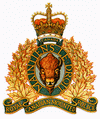
|
RCMP HISTORYThis bibliography covers the period of the early 1800s to the mid-1980s. However, the emphasis is on the early years of the RCMP and their role in the development of the Canadian West. Resources listed in this bibliography cover a wide range of material that includes official government reports; memoirs of members of the force; various histories of the RNWMP and the RCMP; journal articles examining the role of the RNWMP and the RCMP in the opening of the west, relations with the first nations people and specific historical incidents such as the Voyage of the St. Roch. As well, historical figures are examined such as the famous metis guide Jerry Potts, the First Nations person Almighty Voice and the Yukon's Supt. Sam Steele. A large number of items in the bibliography consist of the extensive pulp fiction that was published in the early years of the twentieth century through the nineteen forties that was devoted to the RCMP. This material served to enhance the RCMP image as law enforcers and dedicated police officers who were temperate, stable, devout and virtuous individuals. Pulp fiction of this sort was also served the purpose of establishing the RCMP as one of the best known police forces in the world. Much of this literature was intended for a juvenile audience and it was quite common to focus on a recurring character or theme for a series of novels or stories. With the expansion of the Internet, there are an increasing number of web sites devoted to these pulp fiction authors and their publications. The historical period covered by most of the bibliography could be
summarized as follows: Having observed the American situation, the Canadian government wished to avoid a lengthy series of wars with the native population or to allow settlement to precede government. Further complicating the matter was the presence of whiskey traders and other disreputable individuals who were exploiting the native population. An armed confrontation between whites and Indians in the Cypress Hills added urgency to the creation of a new police force. The basic concept of the North West Mounted Police was to be a well-armed force that was organized along military lines with commissioned and non-commissioned ranks. To establish law and order in the new territory, the force would have both legal and penal powers with NWMP officers also serving as magistrates. In fact, the NWMP tried over 80% of criminal cases in the Territories before 1885. With only a small permanent military force, there was an abundant supply of young men wishing to serve in the mounted police, seeking action and adventure. They shared a strong sense of purpose and missionary zeal fuelled by a competitive belief that they could more successfully manage their own western expansion than had the Americans. The first contingent to arrive in the west consisted of three hundred mounted policemen, organized along the lines of a cavalry regiment into six troops of fifty, embarking on a 1,200 kilometre overland trek. Directed by Ottawa to stay close to the southern border, they traversed the driest and least travelled part of the North West Territories. Despite enormous physical challenges, the great ‘March West' became a kind of founding myth of noble purpose, virtue and moral integrity. The whiskey trading and exploitation of native peoples was greatly reduced with the presence of the NWMP in the new frontier. But immigration was slow, delayed by political problems and difficulties with construction of the transcontinental railway. The NWMP engaged in a strategy of carefully explaining the new legal system to the indigenous population, a strategy that worked extraordinarily well and established a high degree of respect and trust with the First Nations people. This result in the successful negotiations of significant treaties with the Cree and Blackfoot First Nations. While it was initially believed by the government that the NWMP. would police the northwest region for a couple of decades before disappearing, the NWMP were so popular that it became impossible for them be to phased out, especially as the North West territory increased in population. With the advent of the Klondike gold rush in 1896-97, under the
leadership of Superintendent Sam Steele, the NWMP generally performed
whatever government services were necessary. To a large extent, the NWMP
was the de facto government at this time and the basis for law and
order and a civil society. With the establishment of Alberta and Saskatchewan in 1905
and the possibility of provincial police forces, the new provinces agreed
to utilize the services of the Royal North West Mounted Police as
provincial police. The NWMP itself emerged as a national police force in
1919 with the establishment of the Royal Canadian Mounted Police. Bibliography:
|
